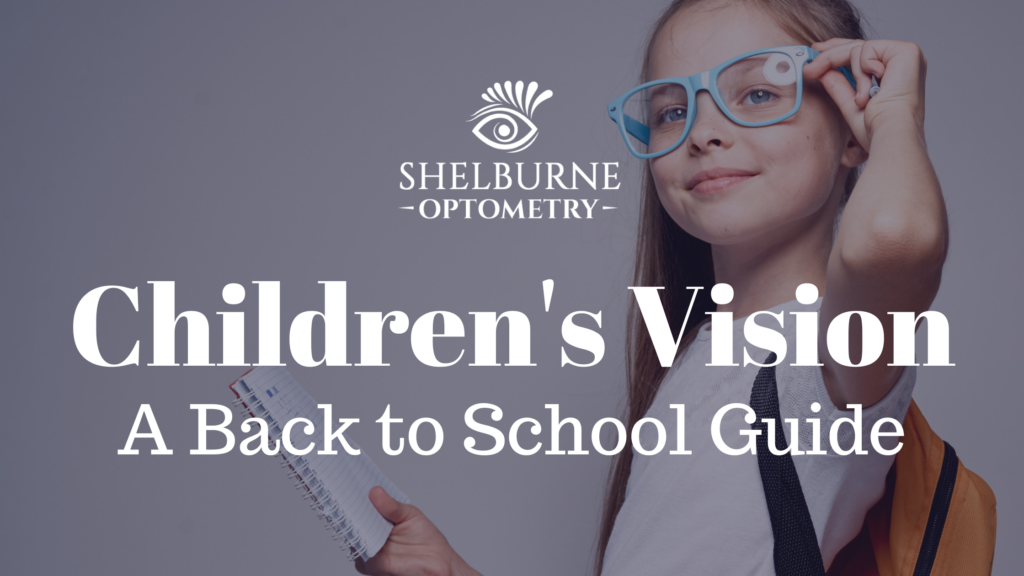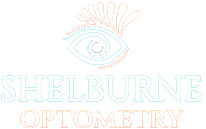Across the country, parents and guardians are beginning to feel that exciting hum in the air: school is almost back. 😎
The usual checklist begins: backpack, pencil case, etc. But how many parents have “eye exam” on their list?
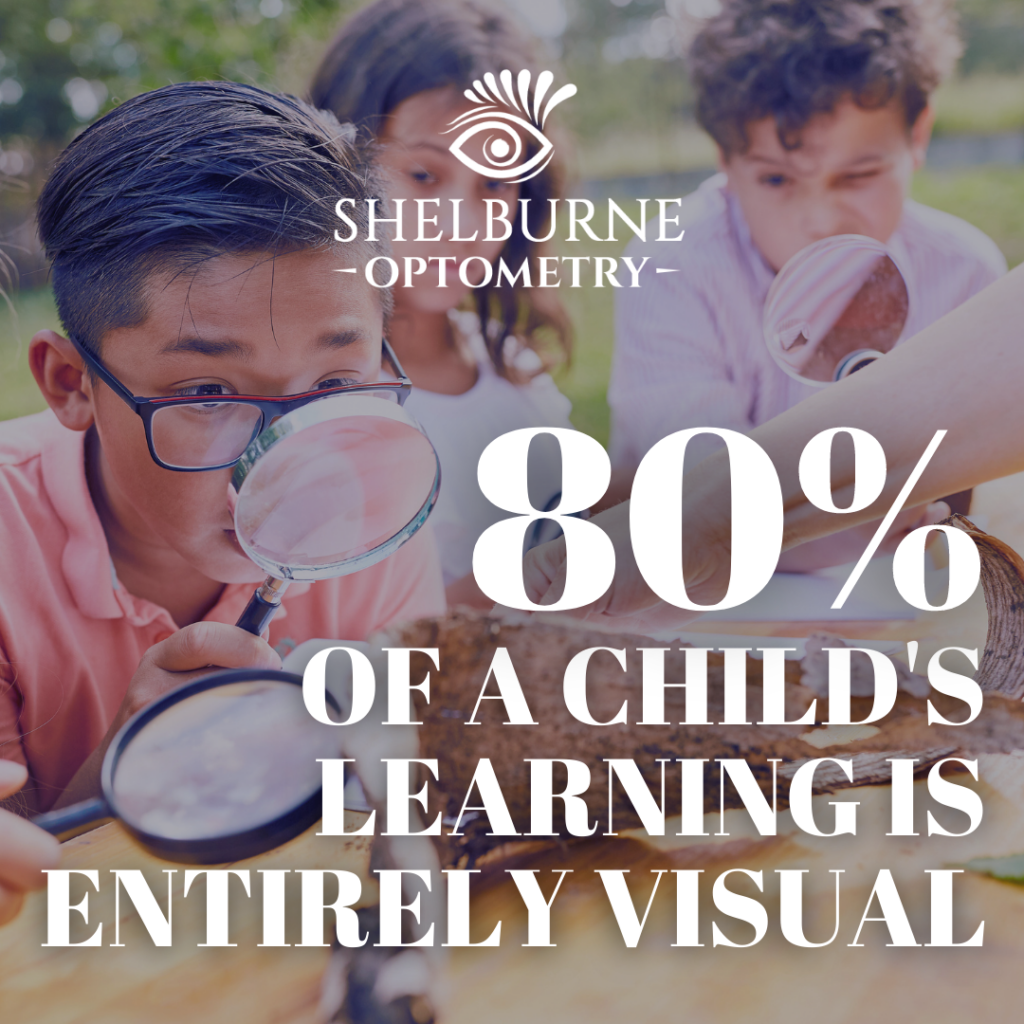
80% of a child’s learning is entirely visual. School is where many children’s eye concerns become apparent. Whether they can’t see the board, or their eyes lose focus while writing up close, the repetitive tasks of looking and learning can draw attention to where your child may need some help with their vision.
A common reason we hear in optometry for putting off children’s eye exams is due to cost: whether it’s for the exam itself, or glasses. And we understand – kids are expensive. But investing in your child’s eye health now can save money down the road by catching vision concerns early.
Did you know?
In Ontario, all children between the ages of 0 and 19 years with a valid Ontario Health Card are eligible for one full eye exam covered by OHIP once within a twelve month period. The OHIP billing period resets after a year and a day. Example: Little Timmy has his annual eye exam on August 1st, 2022, and the visit is billed through OHIP. Little Timmy will be eligible for his next annual eye exam through OHIP on August 2nd, 2023. Make sense?
It is recommended that children receive their first exam between the ages of 6 and 12 months, then again at age 3, or sooner if their doctor determines it’s necessary. Once they begin school, they should be seen annually.
We highly encourage parents to take advantage of this government coverage, even if your child’s eyes are healthy and their vision is good. It costs nothing to ensure peace of mind that everything is working and developing well.
The Eyeball of a Child
One common and perfectly innocent mistake some parents make when it comes to their children’s vision, is comparing their child’s experience to their own childhood experience. It actually takes at least two decades for a child’s eyes to completely develop. They will be in their early 20’s when their eyes stop growing. That means there are at least twenty years of development to monitor, and a lot of factors go into that development.
For starters, it’s very likely your child spends more time in front of screens than you did as a child. They also (depending where you live) may not spend as much time outside as you did, which means their vision may be developing within the distance of one room at a time.
Children also have a difficult time communicating what’s going on with their vision, as they have no experience outside of their own to compare it to. To them, their vision is perfectly normal until someone explains that it isn’t. Children also aren’t always terribly forthcoming when it comes to injuries that may affect their eyes, such as playing where they aren’t supposed to, or little fights with siblings or other children that they fear punishment for. Regular eye exams can be an invaluable asset to monitoring your child’s healthy development.
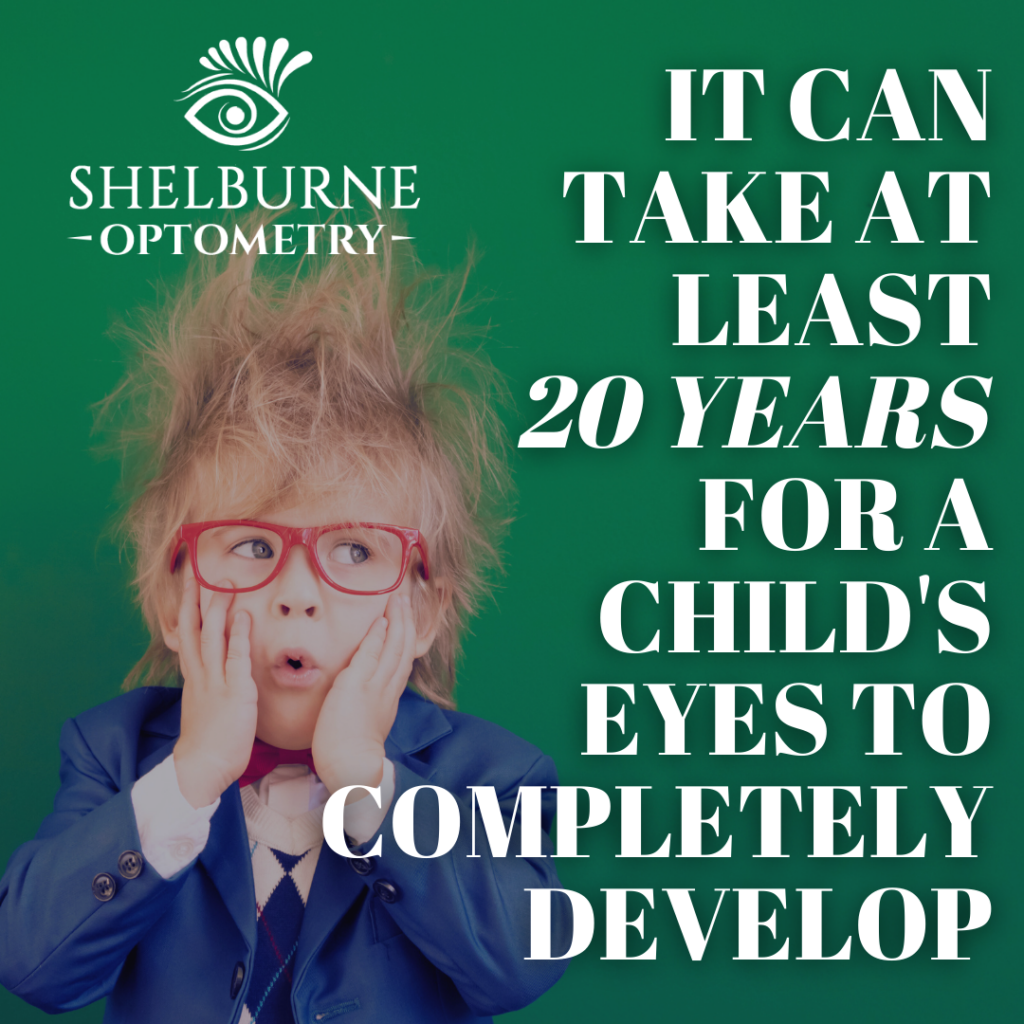
Risk Factors for Children
Besides children’s general sense of invincibility, here are some other factors that tend to affect children specifically when it comes to their eyes:
- Chemical Injury – eternally curious, kids touch all kinds of things and then touch their face, including their eyes. Always make sure cleaning products and the like are safely out of reach.
- Colour Blindness – this can develop early, and is more common in boys than girls.
- Depth Perception difficulties
- Double Vision
- Hand-Eye Coordination difficulties
- Injury – harkening back to that sense of invincibility and eternal curiosity.
- Myopia – nearsightedness that can become quite severe if left undetected or untreated.
- Pediatric Cataracts – these can cause irreversible damage in the communication between their eyes and brain, but luckily this condition is usually detected at birth or early pediatric visits.
- Smoking during pregnancy – this increases the risk of premature birth, which is more likely to include potential vision loss or even blindness.
- Strabismus – this is a condition where one eye seems to focus forward, while the other “turns”, either inward or outward (though sometimes also upward or downward), to help them focus on what’s in front of them.
- Vision Loss – undetected vision concerns can lead to potentially irreversible vision loss, leading to lifelong glasses-wear.
Children and Screen Time
As mentioned previously in this post, children are spending way more time on screens than we ever did, due to the unbelievable progression of technology in the past couple of decades. Between handheld games, phones, tablets and computers, children are being exposed to screens every day, causing their eyes to adapt to the close range and increase their risk of eye strain.
Did you know? Virtual Reality (VR) headsets come with warnings to not use them for longer than 20 minutes at a time, due to the close range of the screen.
It’s important to the healthy development of their eyes (and social skills and imaginations) that children use screens in moderation. Other risk factors include throwing off their sleeping habits, limiting their physical activity, and exposing them to inappropriate behaviour when their online use isn’t monitored.
The Canadian Association of Optometrists recommends zero screen time for children under the age of 2, to lower the risk of interference with their vision’s natural development. For this same reason, they recommend children aged 2 to 5 years limit their daily screen time to one hour, and school aged children (5 to 18 years) should ideally limit their recreational screen time to no more than 2 hours per day. This number is increased for school time (unfortunately) but we’ll get into that more below.
The Truth About Blue Light
Believe it or not, blue light itself is actually not dangerous. Like anything, it’s the overexposure that leads to issues. The reason our eyes hurt after staring at screens for too long is most commonly due to “digital eye strain”, and dry eyes from lack of blinking (we actually blink up to 60% less than normal while staring at screens).
A useful tip (besides limiting screen time) is to employ the “20-20-20” rule: every 20 minutes, focus on something 20 feet away for at least 20 seconds. This helps give our eyes a little break from the staring.
Blue light definitely affects our circadian rhythm, due to our largest source of blue light, the sun. Excessive exposure keeps us awake when we should be sleeping. Screen time should stop a minimum of one hour before bedtime.
Also, please don’t spend money on blue-light-blocking glasses online. There is zero evidence backing up their claims. Talk to your optometrist instead.
What to Watch For
There are a few habits your child may pick up that could be clues that they’re struggling to see:
- Consistently losing their place while reading or looking for things up close
- Frequent blinking, headaches and/or rubbing
- Incorrectly identifying colours and/or shapes
- Irregular “focusing” habits – turning their head to look sideways at something ahead of them, “pulling” the outer corner of their eye to increase squint, or even covering one eye
- Light Sensitivity
- One of their eyes turning in while they try to focus
- Red or irritated eyes; also excessive watering
- Short attention span or quickly losing interest in activities that require visual focus
- Sitting too close to screens (TV or computer especially)
Many of these symptoms are also consistent with Attention Deficit Hyperactive Disorder (ADHD). A proper eye exam can help prevent potential misdiagnosis.
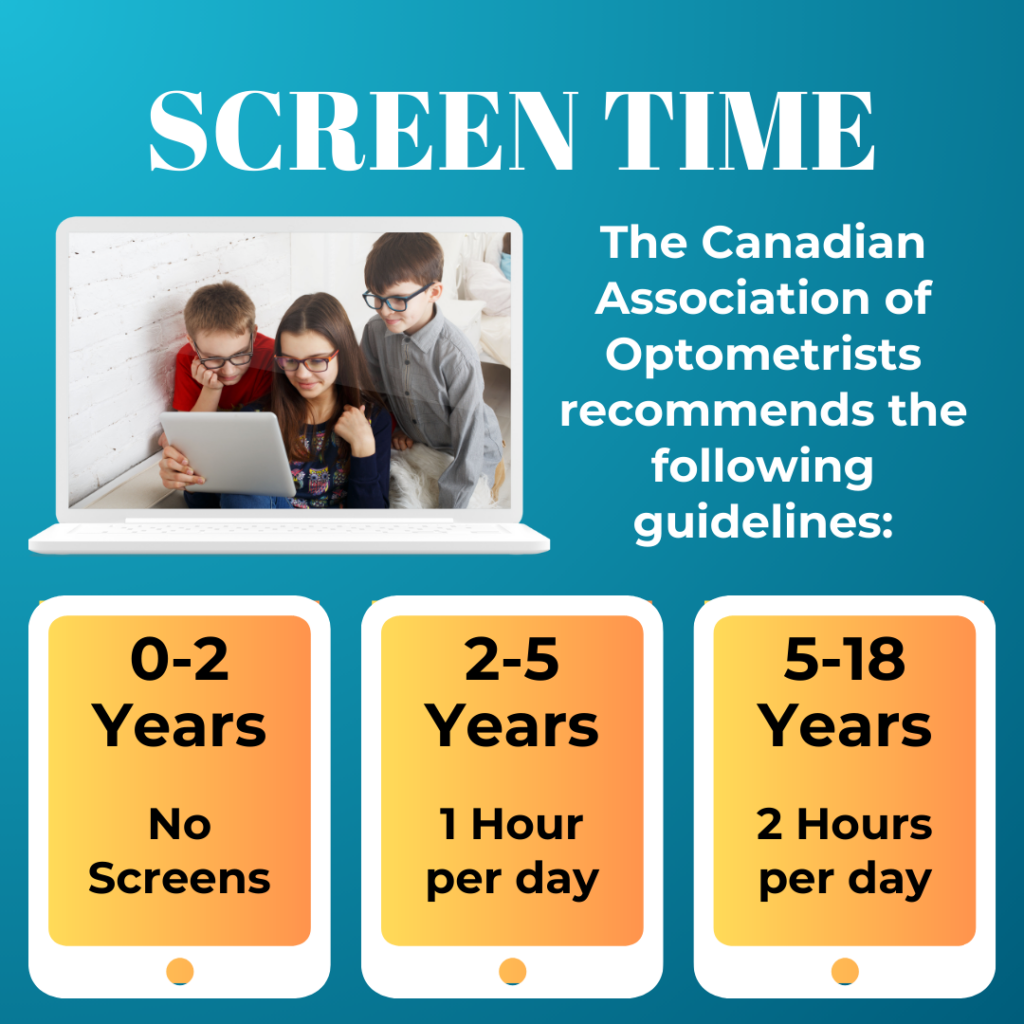
Vision Factors in the Classroom
The most common vision concerns for school age children are myopia (nearsightedness), hyperopia (farsightedness), and astigmatism (when the shape of the eye affects how light bends as it enters the eye). Even a child with 20/20 vision can have issues with focus, tracking and coordination.
We have muscles in our eyes that help us “accommodate” between near vision and far vision that are much more flexible in children. This natural ability to “assist” with focus can give the impression that the child’s seeing clearly. This can lead to “over-accommodation” and their eyes developing around the accommodated vision instead of their natural, relaxed vision. A comprehensive eye exam can help determine if this is occurring.
Children’s Eye Exams
At Shelburne Optometry, all our exams begin with Pre-Testing, led by one of our wonderful assistants. Depending on the age of your child, Pre-Testing may be included. This will involve the child resting their chin and forehead against a machine that shows them a picture of a hot air balloon (other offices occasionally have a red barn). As the child focuses on the image, it alternates between blurry and clear, as the machine takes measurements of how the child’s eye reacts and focuses. This information is then forwarded to the doctor in the exam room, where the rest of the exam builds upon these findings.
Please note: the pretest is not the exam, nor does it provide your child’s prescription. Only the doctor can determine that, following a full examination.
Children’s eye exams are tailored to the child, and where they’re at with attention span and letter recognition. Children unfamiliar with their letters are given tests using shapes they can identify instead. In addition to a general health check, children’s exams also include a colour vision test, and various tests to identify how their eyes are tracking movement as well as their depth perception.
After all testing is complete, the doctor determines the child’s prescription and if glasses are needed. If they are, the doctor will indicate if the child needs to wear their glasses full-time or only during specific tasks.
Cyclo Drops
Cyclopentolate HCL Drops (or Cyclo Drops) are administered to dilate the pupils and relax the eye muscles. They’re used more commonly with children than adults, due to those handy accommodation muscles I mentioned earlier. These drops essentially “turn off” your child’s accommodation muscles for a time, allowing the doctor to get a proper measurement of their natural prescription (without those little muscles “helping out” and throwing off the true measurements).
Dilation can take up to 40 minutes to complete, and a few hours to subside. The dilation may remain for longer periods of time, sometimes up to 24 hours. This is normal, but always reach out to your optometrist if you’re concerned. The dilation affects up-close vision (making it blurry) and increases light sensitivity.
The drops sting when administered, very similarly to getting shampoo in your eye, but the pain subsides within a moment or two. It’s important to keep your child comfortable and emotionally supported during this trying three minute process. They may cry, but we promise we are not doing anything cruel or unessential. Cyclo drops are the most accurate and effective way to determine your child’s prescription needs.
Children’s Glasses
In today’s world, the stigmatism attached to being “the kid in glasses” is rapidly declining, especially as children’s need for glasses increases. However, there may still be some hesitancy from a child to wear glasses due to their personal perception, or how they feel their peers may perceive them.
If you wear glasses yourself, try not to complain about them around your child. This teaches them that glasses aren’t helpful, and knowing their glasses are helping them is an important factor in encouraging them to wear them.
My personal favourite method is sharing the fact that all the best superheroes wear glasses when they’re not out saving the world: Superman, Spider-Man and Wonder Woman, just to name a few.
When it comes to purchasing your child’s glasses, in-person fitting and purchasing is a must. A child’s healthy vision development is very much affected by the quality of their glasses. It’s imperative that their glasses are confirmed to fit correctly, to ensure the lenses sit where they need to in order to aid your child as best they can.
We completely understand the financial stress glasses can bring. One of the main reasons online glasses are so much cheaper is because they don’t have the costs of running a brick-and-mortar establishment. This can seem like a win for your wallet, but there’s no one to reach through that screen and make sure the glasses you’re choosing are going to fit properly and serve you (or your child) well.
Prioritising your child’s vision is so very important, and we’re happy to do our best to work within your budget and ensure they get the best help they can.
At Shelburne Optometry, we’re proud partners with the Eye See…Eye Learn Program, offering glasses for qualifying children in kindergarten.
Vision Therapy
Depending on the results of your child’s eye exam, the doctor may recommend vision therapy. This is a program tailored to your child’s needs that helps strengthen the relationship between their eyes and brain. It employs the use of eye exercises to treat issues such as eye alignment, focusing, and movement tracking.
Vision Therapy begins with an initial consultation where the therapy will take place (some optometry offices offer in-house vision therapy, others refer their patients out to a trusted clinic). This allows you to ask any questions and get clear on the benefits being offered to your child.

Final Thoughts
Quality of vision can be directly tied to quality of life. Children are mysterious little creatures, and treating their vision can seem like a daunting process, but we’re here to help.
Your child’s vision is not out of your hands: Limit their screen time. Encourage vision breaks every 20 minutes. Encourage physical breaks every 30 to 60 minutes where they actually get up and move their bodies. Ensure their screens are positioned properly and aren’t too close or causing them to hunch over (screens should be eye-level and 18 to 24 inches away; arm’s length usually works). No screens before bed. Like at least a full hour before bed, no screens. Encourage them to go outside. Myopia progression has links to kids who spend less time outdoors. Encourage outdoor play.
And finally, make sure they have regular eye exams. (If it’s been over a year, click here to get them booked in, and we’ll get them on track to better vision health.)
Wishing you all the best in wherever your path (or your little one’s) takes you today,
Sydney


